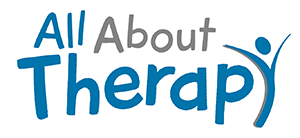 The acronym “IEP” stands for “Individualized Education Plan.” Since I have two school-aged children on the Autism Spectrum, I have attended many IEP meetings. In Wake County, North Carolina, children receive an IEP when they age out of the Birth-to-Three program through the Children’s Developmental Services Agency (CDSA) and are transferred to the Wake County Public School System (WCPSS). A child can also qualify for an IEP at a later age when there is a new diagnosis that sufficiently qualifies him for services and there is a demonstrated impact on academic performance and/or school functioning. If you are the parent of a young child with special needs, you may have questions about starting the IEP process.
The acronym “IEP” stands for “Individualized Education Plan.” Since I have two school-aged children on the Autism Spectrum, I have attended many IEP meetings. In Wake County, North Carolina, children receive an IEP when they age out of the Birth-to-Three program through the Children’s Developmental Services Agency (CDSA) and are transferred to the Wake County Public School System (WCPSS). A child can also qualify for an IEP at a later age when there is a new diagnosis that sufficiently qualifies him for services and there is a demonstrated impact on academic performance and/or school functioning. If you are the parent of a young child with special needs, you may have questions about starting the IEP process.
If your child was enrolled in any early-intervention services, like Occupational Therapy, you have seen the benefits and progress your child has achieved. You may feel nervous about whether your child will continue to receive those needed therapies. One of the best things you can do to prepare to be your child’s best advocate is to collect notes, outside evaluations, and data from your therapists that support your child’s need for services.
The process of transferring from the CDSA to WCPSS usually involves 3 meetings:
- Referral Meeting
- Eligibility Meeting
- IEP Meeting
Both parents have the right to attend each meeting and also to bring with them anyone who will advocate for their child. This is especially important for the IEP meeting, when actual goals will be set and services will be determined.
The Referral Meeting is an introductory meeting in which the Pre-School Services or Special Education Department will receive basic information about your child, discuss your child’s current strengths and weaknesses, and determine if evaluations are needed. Usually, evaluations are necessary. The team will discuss which evaluations are needed and how to get ready for them. You will be assigned a Case Manager who will be responsible for scheduling and coordinating all evaluations. Typically, evaluations are done at a WCPSS location, not in your home or natural environment.
The Eligibility Meeting will occur after all evaluations are complete. The results of all evaluations will be shared and discussed at this meeting. Parents will be given time to ask questions. The main goal will be to decide whether the child is eligible for special education in North Carolina. If yes, then a primary area of disability will be established.
The IEP meeting will be the final meeting before your child begins special education services through WCPSS. In my experience, this is a lengthy meeting and your child does not need to attend, so leaving him with a trusted sitter or relative may be a good choice. Also, if a particular therapist knows your child and his special needs very well, you may invite that person to join you at the IEP meeting. (Please note that you may be responsible for compensating the therapist for their time.) The main goals of the IEP meeting are to establish a list of your child’s strengths and weaknesses that may affect their educational success, and create a list of appropriate goals that your child and his therapists will work towards for the coming year. Services are assigned according to the goals set.
Further information about special education services in Wake County, NC may be found at the WCPSS website: If you have any questions about incorporating Occupational Therapy services into your child’s therapy plan, please feel free to contact All About Therapy at (919) 448-6018.
